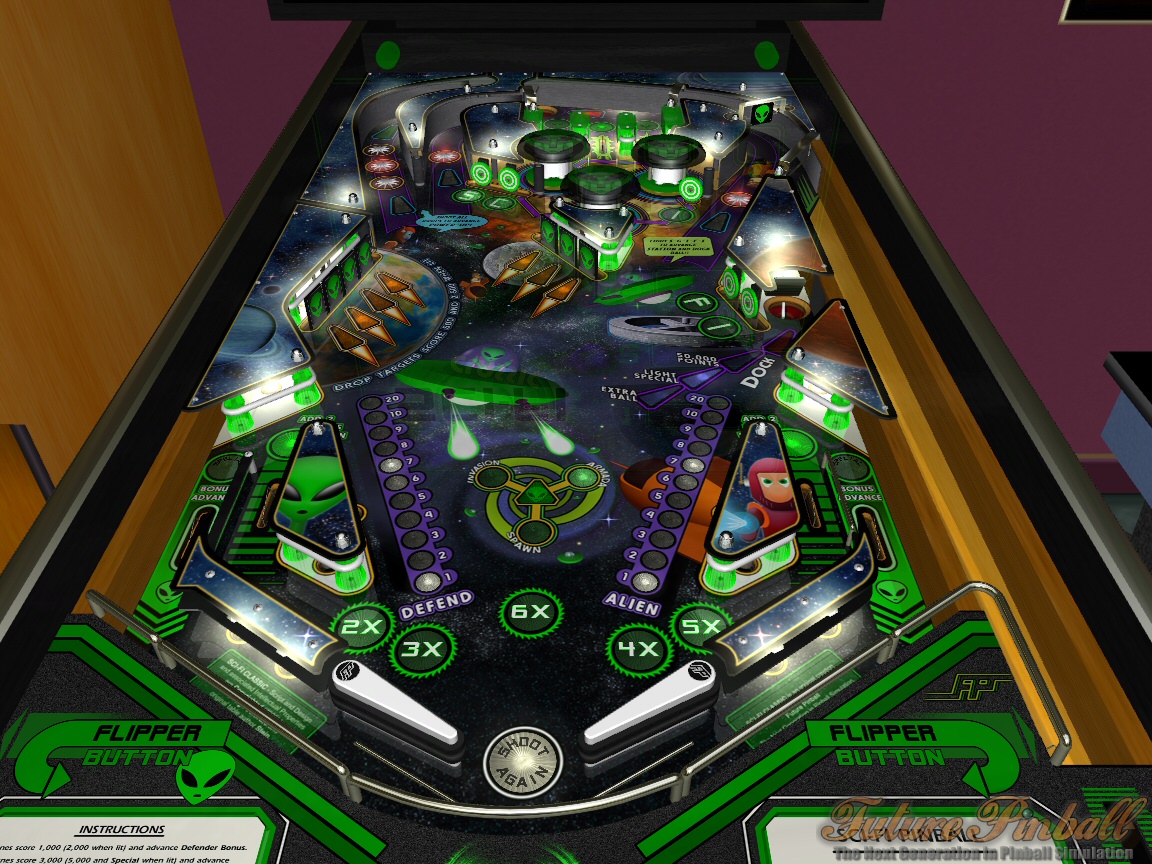

On the other hand I have vivid memories of failing miserably at Dragon’s Lair and Donkey Kong. I was aware of them, probably played a few, but nothing memorable. Story time I grew up when arcades were filled with video games, not pinball machines.

Ball was floaty, flipper trajectory was all over the place, and it did still feel like a video game. While the look and sounds were there, the physics in my opinion weren’t. Whoops, slippery slope to addiction, here I come. I hadn’t touched a real machine since probably ‘94, but I recognized Haunted House and Cue Ball Wizard among the titles and scooped it up for five bucks. Myself, I discovered this game in a bargain bin while searching for a random mahjong game back in 2003.

Featuring 7 Gottlieb pins, it had the look and sound of machines people might be familiar with. The first game entirely built around existing machines, Microsoft Pinball Arcade, came out in 1998.
VISUAL PINBALL VS PINBALL ARCADE PRO
Today you can buy Pro Pinball Ultra on Steam for $15, which only gets you Timeshock, but it’s beautifully remastered. You were also dealing with original designs, so no real world machine to compare to. The major downside was each table was terribly expensive. The physics engine used was superb, mimicking real ball bounce and behavior. Pro Pinball used pre-rendered graphics and produced some of the best looking, photo realistic tables and lighting seen, even to this day. I’ll be honest, I didn’t play any of these until just a few years ago, but I can see why people still lose their minds over them. This was followed up in ‘97 with Timeshock, ‘98 brought Big Race USA, and ‘00 their final table, Fantastic Journey. Their first table, The Web, came out in 1996 for PC. Timeshock!Ī lot of people will cite Pro Pinball as the start of what we see in today’s digital pinball landscape. For that reason, I’m gonna skip forward to when digital pinball actually started looking and feeling like it’s real counterpart. Throughout the years, games like High Speed and Pinbot got converted to cartridges for various systems, and again they were a far cry from being anything like real pinball. If you’ve ever played the video mode of Theatre of Magic, that gives you an idea of how bad the game was. It’s been so long, I can’t remember the details of it, nor do I care because it was awful. Yes, there were flippers, pop bumpers, and maybe even slingshots. I happen to be old enough to remember when the Atari 2600 had a pinball game on it. So put aside your biases, and let me give you a brief history of what was and what is digital pinball. In this age of eSports, it’s only a matter of time before digital pinball joins the fray. Not sure if you want to buy a machine that you’ll maybe get bored of? Play it for 2 weeks straight digitally and see how deep the rules really are. In a tournament with a table you are unfamiliar with? Odds are you can play it on your phone and come up with a strategy quickly. For the typical price of 5 plays these days, you can permanently own the digital version. The beautiful thing about digital pinball is it’s low cost entry to maximum fun.
VISUAL PINBALL VS PINBALL ARCADE FULL
Original pinball titles doing things only possible in the digital realm have swelled in number, with one company having over 70 titles that also offer full cabinet support. Various companies make digital pinball cabinets, with working DMD screens, digital backboxes, working solenoids, shaker motors, and tilt bobs to seriously blur the line between real and digital. Not too many locations in the world that can boast that number, and these won’t ever be down for maintenance. There are as of this writing 144 real world tables you can play recreations of either on your iPhone or PC, fully licensed by the original manufacturers.

What digital pinball does offer is a valid alternative. Don’t get me wrong, I love real pinball and am not here to convince you digital is better. My name is Chris, and I am a digital pinball junkie. A Beginner’s Guide to Virtual Pinball by Chris Friebus


 0 kommentar(er)
0 kommentar(er)
